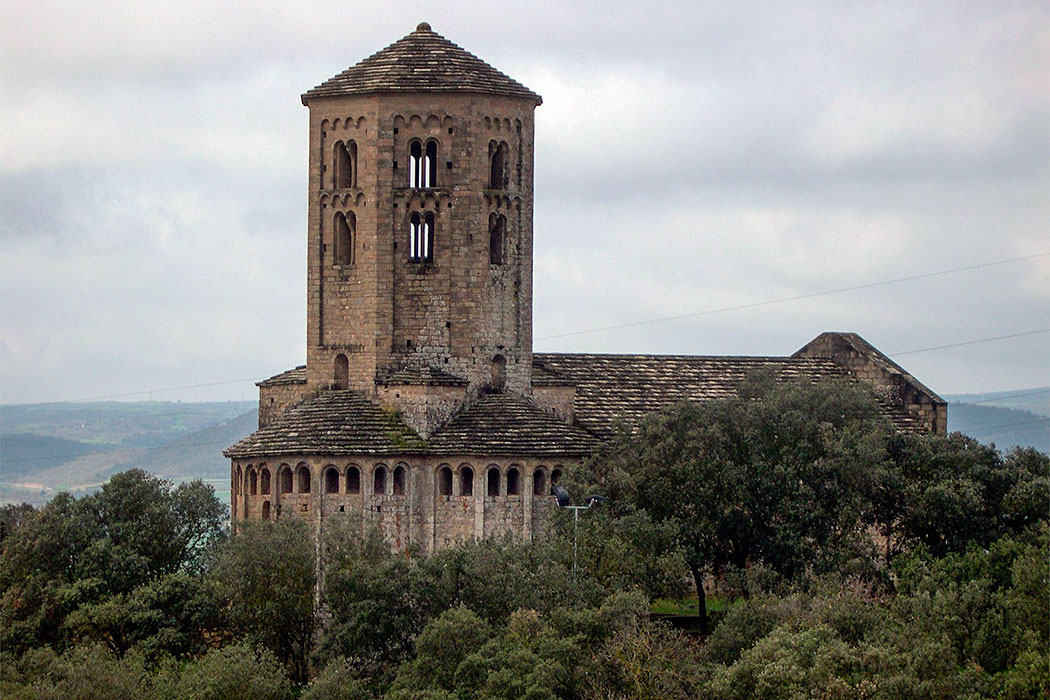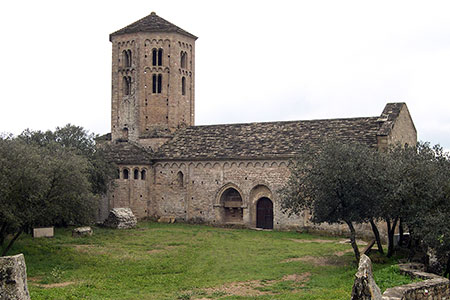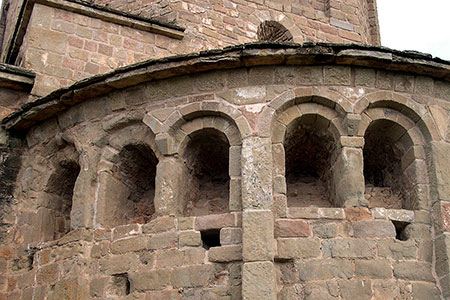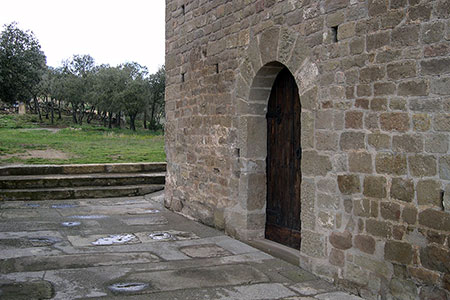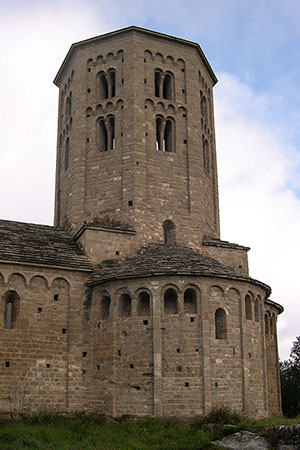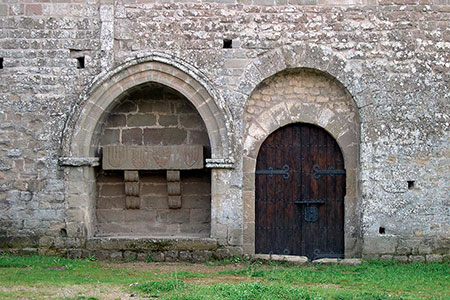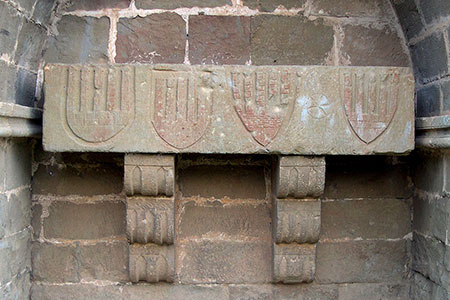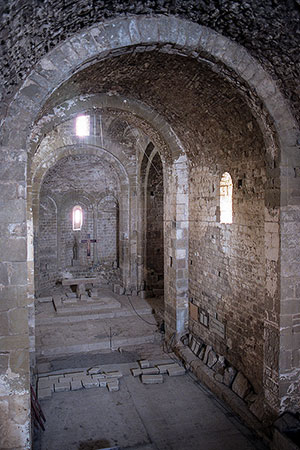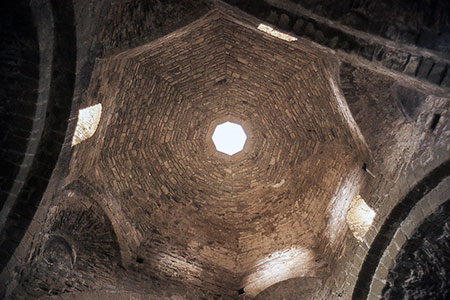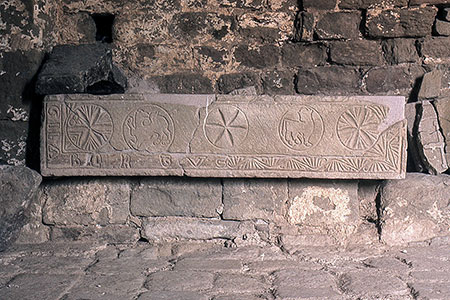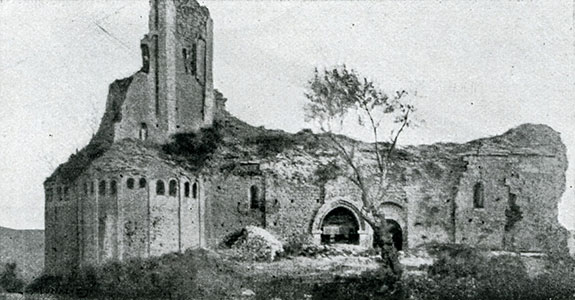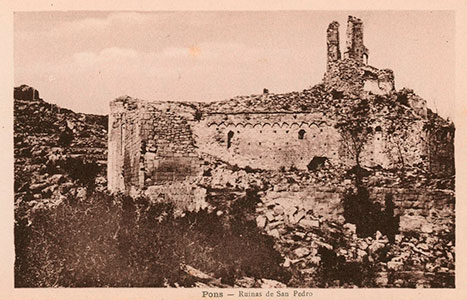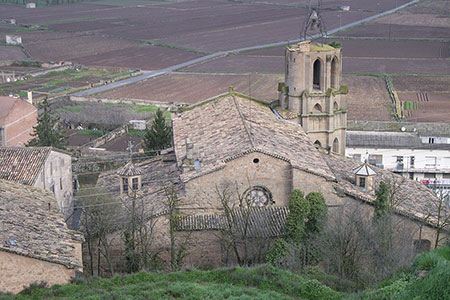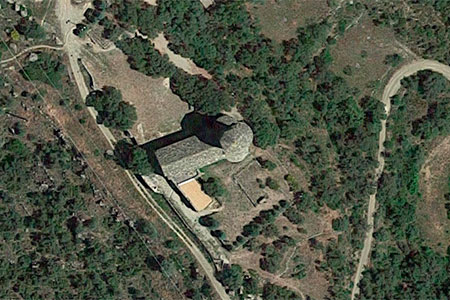Canonry of Sant Pere de Ponts
Collegiate church of Santa Maria and Sant Pere de Ponts
(Ponts, Noguera)
The first record of the church of Sant Pere de Ponts and the castle to which it was linked dates to 1024, when a trial was held in the church itself in which Ermengol II of Urgell (Count between 1010 and 1038), Berenguer Ramon I (Count of Barcelona between 1018 and 1035) and his mother Ermessenda of Carcassonne, among others, took part.
As for the canonry established in this church, there is no certain information about its foundation, except that in 1098 the community of canons is already mentioned in a dispute concerning the differences between the community and a certain Pere de Ponts over the latter's alleged rights over the canons and their activity. These differences were resolved in favour of the monastic community, although the matter had consequences and later became the subject of other lawsuits.
In the second half of the 14th century, the community moved to the church of Santa Maria, very close to the village of Ponts, which would be known as Sant Pere and Santa Maria de Ponts. This church had begun to be built in the 13th century under the hill where the castle and the collegiate church of Sant Pere stand, but the work was stopped, in 1314 it is recorded that it was still under construction. After the transfer of the community of canons, all the services were ordinarily held in this church, although the old collegiate church was still in use. The church of Sant Pere continued to be linked to the canonical church while at the same time performing parish functions, which it shared with that of Santa Maria, closer to the inhabited centre.
In 1391 the Augustinian canonical church was reorganised in the form of a collegiate church, like the reform that would take place at the end of the 16th century in a more generalised manner. This collegiate church maintained its status until the disentailment and its dissolution in 1840. The church of Sant Pere and Santa Maria was destroyed in 1839 with the entry of the Carlists into the town and was later rebuilt in neo-Gothic style. The church of Sant Pere and the castle were also burnt down and blown up along with the outbuildings. Despite its ruinous state, in 1931 the site was declared a National Monument. During the last quarter of the 20th century, it was restored thanks to popular initiative.
The present church is largely the result of that restoration. It is a building with a single nave covered with a barrel vault and topped with a chevet-shaped apse with three apses, facing east, north and south. The dome that serves as the base of a large octagonal lantern tower rises above the chancel. This church has been dated to the 11th century. On the outside, next to one of the doors, there is a tomb with four coats of arms. There are remains of other tombs in the surrounding area, one of which is monumental, Gothic and quite deteriorated. Inside there is another very old tomb, decorated and bearing the name of Gilabertus.
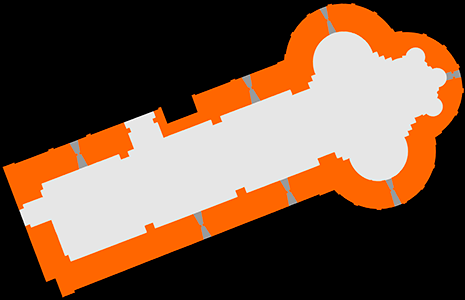
Schematic plan of the church
- GABRIEL I FORN, Manuel (1994). Sant Pere de Ponts. Catalunya romànica. Vol. XVII. La Noguera. Barcelona: Enciclopèdia Catalana
- GAVÍN, Josep M. (1982). Inventari d'esglésies. Vol. 12 Noguera. Barcelona: Arxiu Gavín
- PUIG I CADAFALCH, Josep, i altres (1911). L'arquitectura romànica a Catalunya. Vol. II. Barcelona: I. E. Catalans
